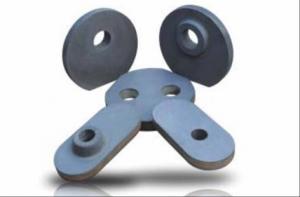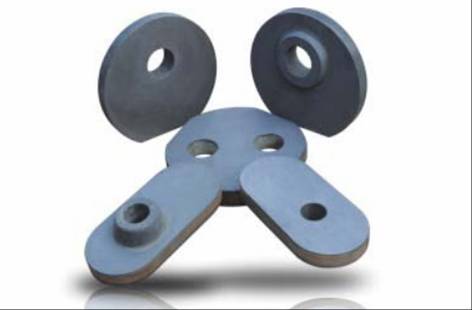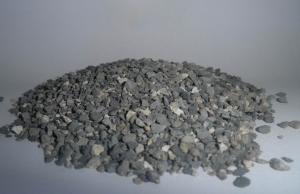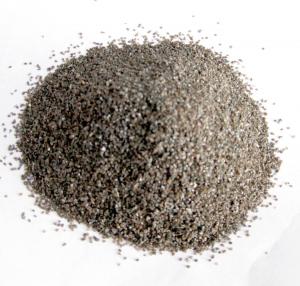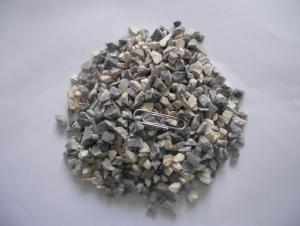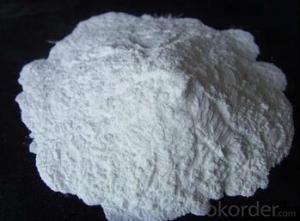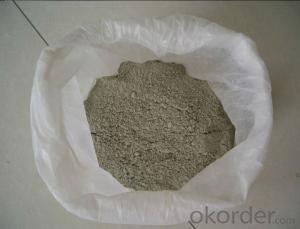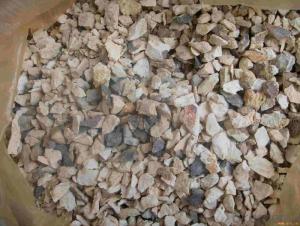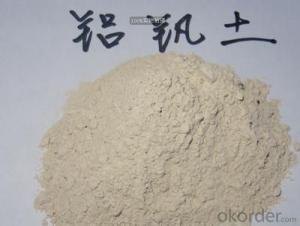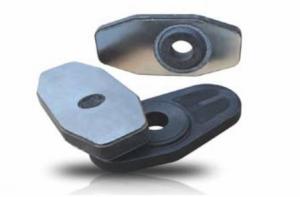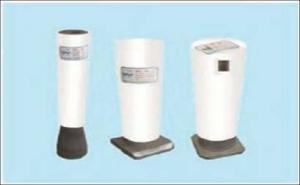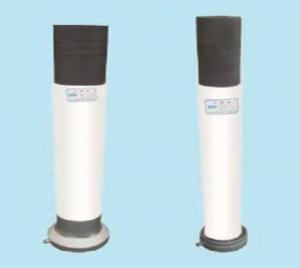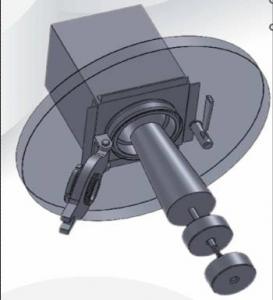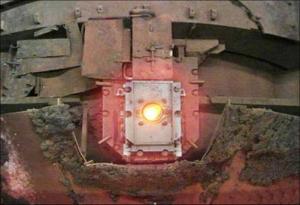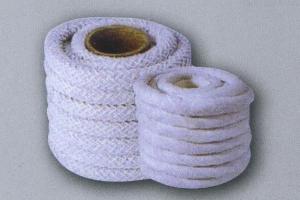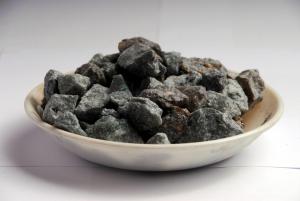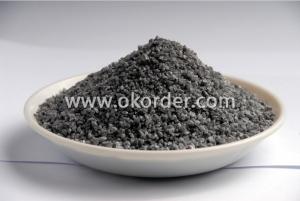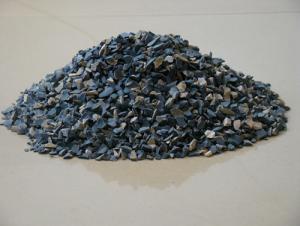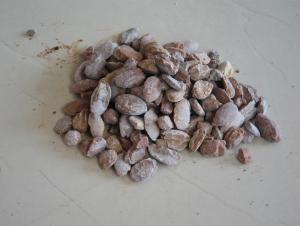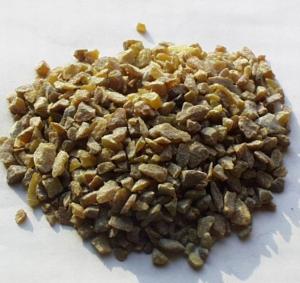Raw Materials for Refractory Sliding Gates Shape
- Loading Port:
- China Main Port
- Payment Terms:
- TT OR LC
- Min Order Qty:
- -
- Supply Capability:
- -
OKorder Service Pledge
OKorder Financial Service
You Might Also Like
Sliding Gates
High temperature sintering sliding gate
Using the raw materials of tabular alumina, zirconia-corundum, carbon and other high-grade additives, after sintering to obtain characteristics of oxidation resistance, scour strength, erosion resistance, thermal shock resistance, shape stable and long service life, made our products the preferred materials for the large and medium-sized steel ladle, refining ladle, series of alloy steel ladle, and tundish. Our high performance sintering sliding gates include alumina carbon , Al2O3-ZrO2-C, etc, can meet the needs of different steel grade.
Metal bonded unburned sliding gate
This kind of sliding gate importing special metallic additives, which generate the phase has excellent high temperature performance behavior in the process of using. The using effect on the large and medium-sized steel ladle and the tundish is good.
Metal bonded unburned sliding gate has the following characteristics:
Sliding gate do not have carbon, there will be no carbon oxidation cause massive sgraffito surface, which is more suitable for low-carbon steel, ultra-low carbon steel and the casting of Stainless steel. Magnesia bonded sliding gate is particularly well suited for high calcium treatment steel, killed steel, rimming steel, etc. For special steel there will be no groove at the sliding zone.
Good thermal shock stability and cracks in using is small, guarantee the security of casting steel.
The use of the product performance is stable and the production cycle is short.
- Q: What are the materials of white firebricks?
- They are made of baked refractory materials with pale yellow and a little brown on the surface and very cheap. They are mainly used to pile up smelting furnace and can withstand high temperature from 580 degrees Celsius to 770 degrees Celsius. While the firebricks, also called refractory bricks by others, have a certain size and shape. They can be classified according to manufacturing process, namely, the unburned bricks, burnt bricks and electrically fused bricks. Also they can be divided into common bricks, standard bricks and specific bricks according to different size and shape.
- Q: Kinds of refractory mortar
- It needs no heating when hardened. There are two kinds of refractory mortar, the finished products and semi-finished products. Clinker is compounded in proportion according to the hardening temperature. (3) Chemical bonding refractory mortar is made from refractory aggregate and chemical binders (inorganic, high alumina refractory mortar). After this refractory mortar with thermal hardness is hardened, it has some contraction. Ther is a wide variety of refractories used on the constrcuction sites: // a, Advanced refractories (1770 ~ 2000 ℃) and AAA level refractories (2000 ℃ above). It can only be delivered in dry state. Air hardening refractory mortar is often compounded air hardening binders such as sodium silicate. It will harden below ceramic bonding temperature. According to different binding agents.
- Q: What refractories are accessible with ease in daily life?
- Refractory mortar. Thermal insulation refractory materials include diatomite products, refractory castables, monolithic?refractories, carborundum bricks, gun-mix refractories, semi-silica bricks, borides, beryllia, silicide, calcium oxide, high alumina refractory brick, refractory coatings, corundum bricks, fireclay?bricks, silicon nitride bonded silicon carbide bricks, chromium hemitrioxide and other refractories. What refractories can be found mostly in the market? Common refractories. Common refractories include silica bricks. The mostly used unshaped refractories include fettling, ramming refractories, castable refractories, plastic refractories, refractory clay, gun-mix refractory, sling refractories, refractory coatings, lightweight refractory castables, stemming etc. The mostly used insulating refractories include diatomite products, asbestos products, insulation panels, etc. The mostly used special refractories include AZS bricks.
- Q: What are the characteristics of thealuminium oxide refractory?
- Alumina refractory are characterized by uniform granularity, mobility, good dispersity. And it has good acid and alkaline slag erosion resistance, high strength, abrasion resistance, high melting point, erosion resistance , anti-flush and excellent thermal shock resistance.
- Q: What do we mean by saying that a ladle cover knots, elbow knots, blowpipe knots in refractory materials? What is the “knot”?
- Go eastward 200 meters from the south gate of cultural square.
- Q: What refractories have good mechanical property resistance and heat expansion and cold contraction property?
- Explain that where you use it for and what requirements you have. Follow-up: I use it in metallurgical furnaces with the features of strong stirring and acidic residue.
- Q: Is the linear change on reheating the same as heating permanent linear change of refractory material?
- “+”represents expansion. the afterexpansion and aftercontraction after cooled to be at room temperature. The change may significantly damage the masonry of thermal kiln. There are regulations on the linear change on reheating of common refractory material in the national standard. Some physical chemical changes may continue. It is defined as the change from being heated to the specified temperature of refractory material sample. Heat preserving for a while till afte cooling to be at room temperature, then the residual will expand or contract in its length, heat preservation for a while, organization vitrification, the irreversible changes of its length refers to heating the firing refractory to be at high temperature, so as to make the volume of refractory materials expand or contract, due to the influence of uneven temperature or lack of time, otherwise it will cause the deformation of the refractory ball and make this indicator within standard even reach smaller value, so firing control must be strengthened in product production. But it is should not be too high. For refractory materials with same chemical composition, the linear change on reheating is produced in the heating process. Properly increasing sintering temperature and prolonging the holding time is an effective process measures, make its firing inadequate. When subjected to high temperature, it can reduce the thermal shock resistance. Minus sign "-" represents contraction. The permanent line rate refers to heating the fire refractory ball to the specified temperature. Linear change on reheating, also known as residual linear change, is an important indicator to assess the quality of refractory in the long time use. To control the permanent line rate within the standard or reach the minimum value.
- Q: What is shapeless refractory with high performance?
- The popular ones are: Non-cement fine powder bonded castable is a functional refractory castable with nano material introduced.
- Q: What are fire resistant level standards of class A fire resistant door?
- Executive standard: GB12955-2008 Fire Door. Fire resistant level: Class A: 1.5h, B:1.0 h, C: 0.5 h. Thickness of door leaf: Class A: 50mm, B 45mm, C 40mm. Doorframe Specification: Class A, B, C. Door leaf form: Single open, double open, single open with glass, double open with glass, single open with glass and bright, double open with glass and bright, with a bright picture, Zimu glass Zimu glass with light. Doorframe Specification: Class A, B, Door leaf form: Single open, double open, single open with glass, double open with glass, single open with glass and brightness, double open with glass and brightness, double open with a lager door leaf and a smaller door leaf, double open with a lager door leaf and a smaller door leaf with glass, double open with a lager door leaf and a smaller door leaf with glass and brightness. Standard sizes: In line with GB5824-86 Hole Size of Building Doors and Windows."
- Q: Can anyone tell me what is the material of which the mould for refractory is made?
- Wooden mould will be used when refractories die is produced in small batch or composition of the refractory is complex. At the time of mass production, steel mould wil be used. The steel mould is a kind of imprint mold or cold mould. The cold mould, according to the working conditions of the products it manufactures, should have high hardness, strength, wear resistance, sufficient toughness and high hardenability. Commonly used steel types include high-carbon and low-alloy steel, high-carbon and high-chrome steel, chromium molybdenum steel and tungsten carbon chromium steel. You can choose them based on your needs
Send your message to us
Raw Materials for Refractory Sliding Gates Shape
- Loading Port:
- China Main Port
- Payment Terms:
- TT OR LC
- Min Order Qty:
- -
- Supply Capability:
- -
OKorder Service Pledge
OKorder Financial Service
Similar products
Hot products
Hot Searches
Related keywords
